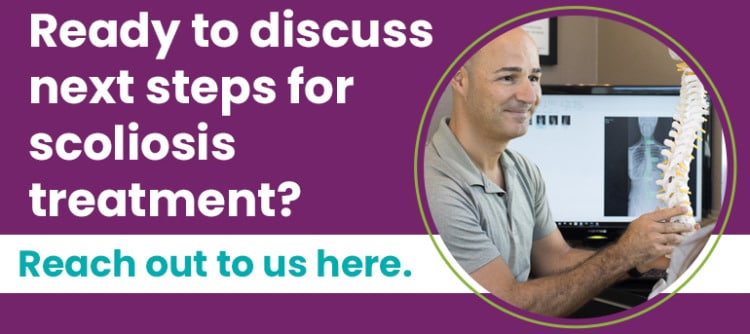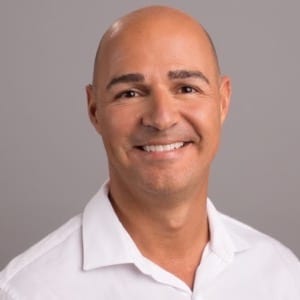What Is The Cause Of Idiopathic Scoliosis: [Find Out Here]
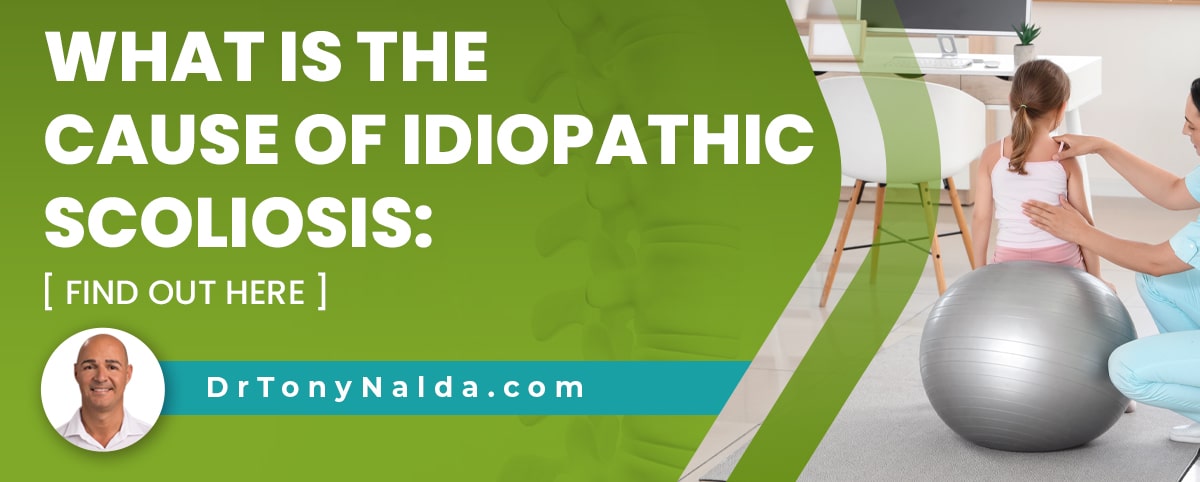
While we don't fully understand what triggers idiopathic scoliosis to develop initially, we know it's growth that makes it progress. As a progressive condition, the nature of idiopathic scoliosis is to get worse over time, which is why early diagnosis and intervention can be so beneficial.
Idiopathic is a medical term that simply means cause unknown. Idiopathic scoliosis is the most common type to affect all ages, and while it's not clearly associated with a single-known cause, it's thought to be multifactorial.
There is a lot we still don't understand about scoliosis, but let's start with what we do know about idiopathic scoliosis.
Table of Contents
What We Know About Idiopathic Scoliosis
While we don't know what causes idiopathic scoliosis, there are a lot of things we do know about the condition: how it progresses, how progression can be managed with treatment, and what happens if it's left untreated.
We know that most cases of scoliosis will get worse over time, and this means the size of the unnatural sideways spinal curve and its rotation will increase.
While idiopathic scoliosis doesn't have a single-known cause, this isn't exactly the same as saying there is a complete absence of a cause; idiopathic scoliosis is generally considered to be multifactorial, meaning caused by a number of variables, or a combination of certain variables, that can differ from patient to patient.
What we know about scoliosis is that it needs to be treated proactively to prevent progression, increasing effects, and the need for future surgical intervention.
What many people ask about scoliosis, particularly parents whose child has been recently diagnosed, is whether or not idiopathic scoliosis is genetic, and the answer is as complex as the condition itself.
Is Idiopathic Scoliosis Genetic?
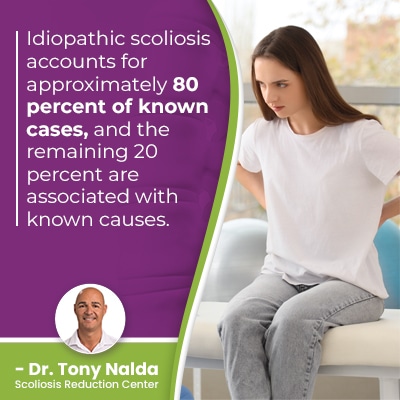 Genetic conditions are caused by a specific gene, or genetic mutation, that can be passed from parent to child.
Genetic conditions are caused by a specific gene, or genetic mutation, that can be passed from parent to child.
Scoliosis is not considered a genetic condition, although it's suggested that certain genetic and environmental factors can play a role in its development.
Current estimates have close to seven million people currently living with scoliosis in the United States alone; considering its prevalence, a lot of research has been done on whether or not the condition is genetic, and despite the number of studies, a single gene responsible for scoliosis has yet to be identified.
It's thought that scoliosis is more familial than genetic, and this accounts for why a family history of scoliosis is considered a risk factor; families share a lot more than just their genes.
Families share similar body types, lifestyles, diets, responses to stress, posture, socioeconomic factors, geographical factors, and more.
In addition, twin studies where one child has the condition and the other doesn't show the condition isn't genetic.
Idiopathic scoliosis accounts for approximately 80 percent of known cases, and the remaining 20 percent are associated with known causes.
Scoliosis With Known Causes
While most cases of scoliosis are idiopathic, there are condition types with known causes that are considered atypical including neuromuscular scoliosis, degenerative scoliosis, and congenital scoliosis.
These condition types can feature left-bending curves, while typical cases of idiopathic scoliosis feature right-bending curves that bend away from the heart.
Neuromuscular Scoliosis
Neuromuscular scoliosis is caused by the presence of a larger neuromuscular condition like spina bifida, muscular dystrophy, and cerebral palsy, and as the underlying cause is another condition, the neuromuscular condition has to be the focus of treatment; scoliosis developing is a complication of a larger medical condition.
Neuromuscular conditions cause a disconnect between the brain, the spine, and the muscles and/or connective tissues and ligaments that support the spine.
My neuromuscular scoliosis patients are among the most difficult to treat with some becoming wheelchair bound and unable to walk on their own.
Degenerative Scoliosis
Degenerative scoliosis affects older adults and is caused by natural age-related spinal degeneration, but the cumulative effect of certain lifestyle factors can also shape a person's level and rate of degenerative changes.
Degenerative scoliosis is also more common in females than males, and this is due to the changes in bone density and hormones caused by menopause.
Degenerative spinal changes usually start in the discs as they can become dehydrated and change shape, affecting the position of adjacent vertebrae attached and causing them to shift out of alignment with the rest of the spine.
Congenital Scoliosis
Congenital scoliosis is caused by a malformed spine that develops in utero so babies are born with the condition; this is a rare type affecting approximately 1 in 10,000.
If the spine forms with multiple vertebral bodies fused together instead of forming into distinct and separate bones, this can cause the spine to form abnormally.
If certain vertebrae are more triangular in shape than rectangular, this can also cause the spine to develop an unnatural curve and twist.
These patients have to be comprehensively assessed as they often present with additional congenital abnormalities.
How is Idiopathic Scoliosis Treated?
While we don't know why idiopathic scoliosis develops, we know how to treat it effectively, and here at the Scoliosis Reduction Center®, patients benefit from proactive non-surgical curve correction.
The sooner treatment is started the better because the more scoliosis is left to progress, the more difficult it is to treat.
If scoliosis is left untreated, the curve can progress unimpeded, and if a patient's scoliosis becomes severe and very severe, complications such as breathing problems and digestive issues can develop.
While early diagnosis and treatment doesn't guarantee treatment success, there is a strong connection, and as we know that virtually all progressive conditions are going to get worse at some point, waiting to start treatment is wasting valuable time.
And as progression is triggered by growth, childhood scoliosis should always be taken seriously and treated proactively to counteract the fast progression that growth can trigger.
Conservative treatment is started immediately following a diagnosis because this is the mildest the condition will be and the most responsive to treatment; smaller curves are easier to correct than severe curves.
Reducing the Curve
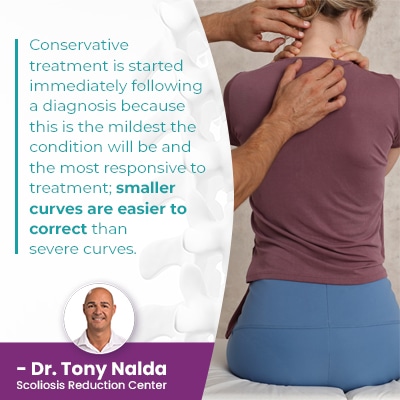 Condition-specific chiropractic care involves a series of techniques and manual adjustments that have the goal of realigning the spine, reducing the size of the unnatural spinal curve, and restoring as much of the spine's healthy curves as possible.
Condition-specific chiropractic care involves a series of techniques and manual adjustments that have the goal of realigning the spine, reducing the size of the unnatural spinal curve, and restoring as much of the spine's healthy curves as possible.
Structural changes within the spine are supported by the spine's surrounding muscles, so physical therapy and scoliosis exercises are applied to improve the balance and strength of the abdominal muscles and back muscles so they can support and stabilize the spine.
Physical therapy can also help correct poor posture and through the use of mirror-image exercises, patients are taught postural awareness and remodeling.
A spine that's surrounded by strong muscles is one that has help maintaining its healthy curves and alignment.
Corrective Bracing
Corrective bracing is an orthotic device worn around the torso that pushes the spine into a corrective position, and when combined with other treatment disciplines, a scoliosis brace can be a valuable facet of treatment.
Bracing is most commonly used to address childhood scoliosis because growing spines are more malleable and responsive to bracing.
Rehabilitation
Rehabilitating the spine is the ongoing pod home exercises so patients can continue to heal and stabilize their spines from home.
Rehabilitation is important for sustainable long-term treatment results.
Conclusion
While the cause of idiopathic scoliosis is unknown, what we do know is that it can be highly treatable, particularly with early detection, intervention, and a proactive and integrative treatment approach.
What's important to understand about idiopathic scoliosis is that where it is at the time of diagnosis doesn't mean that's where it will stay; only proactive treatment can work towards counteracting the condition's progressive nature.
Mild scoliosis that's left untreated can easily progress to become moderate scoliosis, severe scoliosis, and very-severe scoliosis, and the more severe scoliosis is, the more overt its effects are going to be, and the more difficult is to improve and/or reverse condition effects.
The most prevalent type of scoliosis overall is adolescent idiopathic scoliosis diagnosed during adolescence, and while traditional scoliosis treatment funnels severe scoliosis patients into spinal fusion surgery, conservative treatment offers a safer less-invasive treatment option.
Early scoliosis screening can help with early detection, as can awareness of the condition's early signs, and the earliest signs and symptoms of scoliosis in children are often uneven shoulders and uneven hips, and in adults, the main effect of scoliosis is pain.
When I explain to patients recently diagnosed that we don't know what caused their condition to develop, I make sure to also explain that this doesn't change the condition's treatment needs, or the potential efficacy of treatment.
There are a number of famous athletes and celebrities who went on to thrive despite being diagnosed with scoliosis, so ultimately, while I can't guarantee treatment results, there is always hope that improvements can be made and scoliosis can be corrected.
Dr. Tony Nalda
DOCTOR OF CHIROPRACTIC
After receiving an undergraduate degree in psychology and his Doctorate of Chiropractic from Life University, Dr. Nalda settled in Celebration, Florida and proceeded to build one of Central Florida’s most successful chiropractic clinics.
His experience with patients suffering from scoliosis, and the confusion and frustration they faced, led him to seek a specialty in scoliosis care. In 2006 he completed his Intensive Care Certification from CLEAR Institute, a leading scoliosis educational and certification center.
About Dr. Tony Nalda
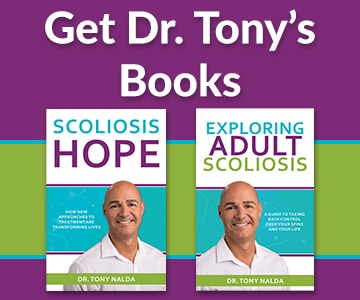 Ready to explore scoliosis treatment? Contact Us Now
Ready to explore scoliosis treatment? Contact Us Now